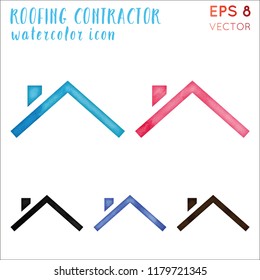Understanding The Distinctions In Between Exterior And Interior Paint: Secret Qualities And Makes Use Of
Understanding The Distinctions In Between Exterior And Interior Paint: Secret Qualities And Makes Use Of
Blog Article
Composed By-Lausten Schmitt
When you're picking in between interior and exterior paint, it's vital to recognize their fundamental differences that influence both efficiency and appearances. Inside paints are crafted for lower VOC levels and smoother surfaces, making them suitable for interior rooms, while exterior paints are developed to withstand rough climate condition and UV exposure. Each type serves a distinctive function, yet knowing when to use one over the various other can significantly influence your project's result. So, what factors should you consider when making your selection?
Structure and Formulation
When picking between exterior and interior paint, understanding their structure and formulation is crucial. Inside paints usually contain a lower quantity of volatile organic compounds (VOCs), making them safer for indoor air top quality. You'll notice they typically have a smoother coating, which improves their ability to stand up to stains and permits much easier cleaning. They're developed to hold up against the roughness of indoor atmospheres, including differing moisture levels and temperature level changes.
On the other hand, exterior paints are formulated to sustain harsher problems. They generally have higher degrees of pigments and ingredients to stand up to fading from UV rays, in addition to to avoid mildew and mold and mildew growth. Their make-up consists of extra binders and resins, which provide far better bond to surface areas subjected to the aspects. This guarantees the paint can stand up to rainfall, snow, and rising and fall temperatures without peeling or breaking.
Efficiency and Toughness
Assessing efficiency and sturdiness is vital when picking in between interior and exterior paint. Inside paint is created for surface areas that experience less deterioration. It usually withstands fading and scuffing, making it optimal for living areas and rooms. Nonetheless, it may not hold up well in high-moisture areas like kitchens and bathrooms without correct formulation.
On the other hand, exterior paint faces harsher problems. It's crafted to stand up to UV rays, rain, and temperature fluctuations. https://exteriorhousepaintersnear99998.blogtov.com/11866774/in-an-initiative-to-take-a-breath-life-right-into-a-dull-area-a-neighborhood-artist-reveals-the-power-of-color-to-reshape-settings-and-enhance-ambiance-what-modifications-await of paint frequently includes additives that stop mold and mildew and mold growth, making certain longevity in numerous climates. When you use exterior paint, you can anticipate it to last a number of years longer than interior paint, offered it's applied properly.
One more crucial difference hinges on the coating alternatives. Inside paints typically have a variety of surfaces for aesthetic charm, while outside paints focus on resilience over sheen. If you're looking for something that can manage the elements, exterior paint is your best choice.
In contrast, if you're concentrated on interior visual appeals with less concern for extreme conditions, indoor paint may be ideal. Ultimately, your selection needs to straighten with the details needs of the environment.
Visual Factors to consider
A fresh layer of paint can change an area, but visual factors to consider play an important function in your option between exterior and interior alternatives. When you're picking paint, think about the state of mind you want to develop. Inside paint enables you to check out a wider range of shades and coatings, allowing you to reveal your individual style and boost your home's setting. Whether Click Link opt for soft pastels or strong shades, the best interior paint can make your rooms feel cozy, dynamic, or peaceful.
On the other hand, exterior paint requires to straighten with your home's style and the surrounding setting. Below, you're not simply making a style statement; you're likewise considering aesthetic allure. Choosing colors that balance with your area can enhance your home's value and aesthetic charm. Keep in mind that exterior paint is also based on fading and climate adjustments, so selecting a timeless color can save you from frequent repainting.
Ultimately, think about how each option fits your vision. By straightening your paint selection with your desired aesthetic, you can create rooms that reflect your character while preserving functionality.
Verdict
When it concerns selecting paint, recognizing the essential distinctions between interior and exterior alternatives is important. Inside paints concentrate on visual appeals and low VOCs, making them best for boosting your indoor rooms. In contrast, exterior paints are developed for longevity and weather resistance, safeguarding your home from the elements. By considering your specific needs and the environment, you can confidently pick the best paint to accomplish the appearance and durability you prefer for your area.
